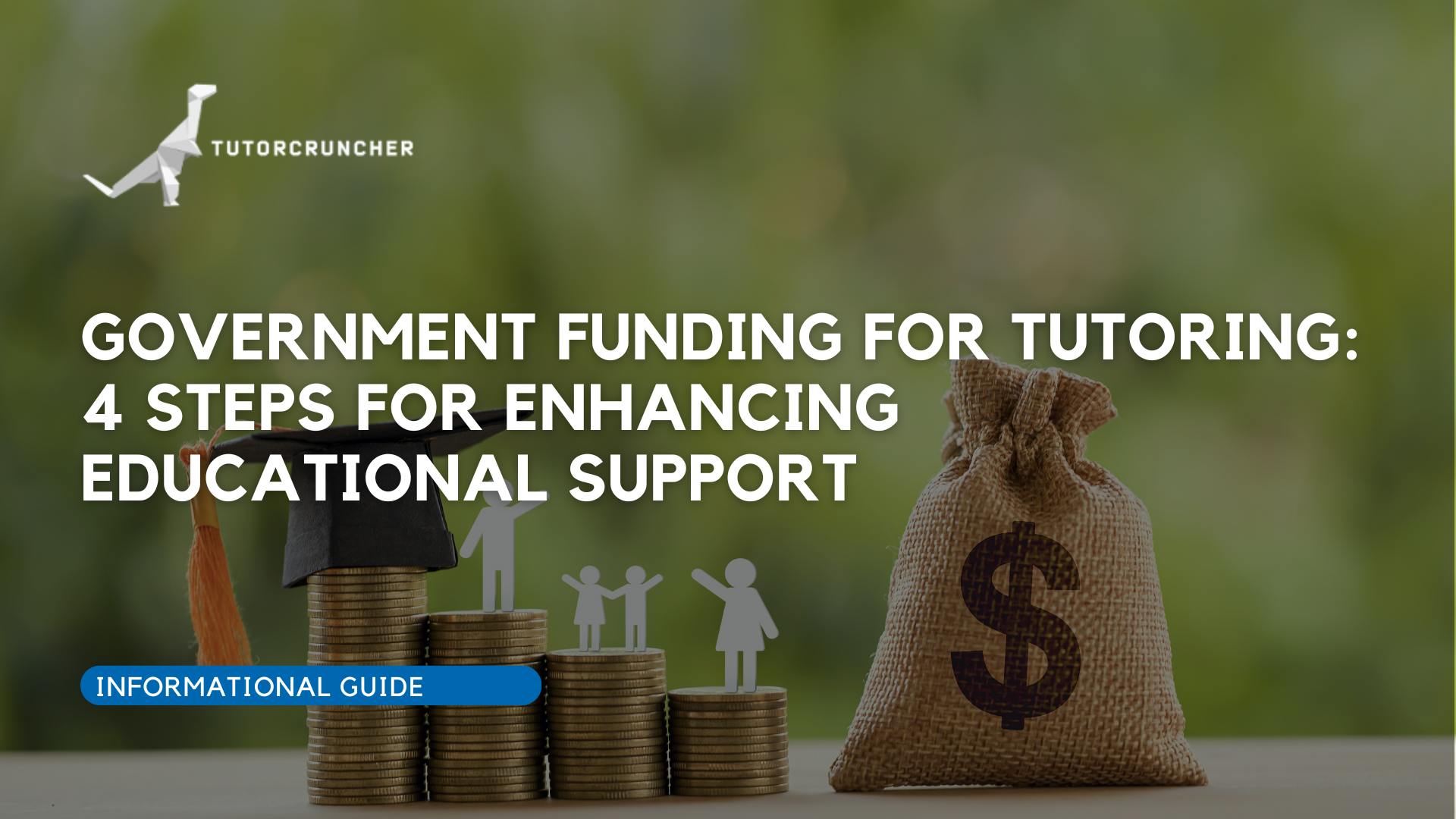Wondering how government funding can support tutoring programs and help students catch up academically? Several avenues funnel funding into these essential educational services.
Federal programs like the Elementary and Secondary Education Act (ESEA) and the Individuals with Disabilities Education Act (IDEA) provide significant financial support. These ensure that school districts have the resources necessary to offer high-quality instructional materials and tutoring services, especially for low-income and special needs students.
During the COVID-19 pandemic, the American Rescue Plan and other relief funds played a critical role in sustaining educational programs. These funds were crucial in addressing learning disruptions by financing high-impact tutoring programs.
Such programs often involve college students or certified tutors working closely with school-aged children to improve their educational outcomes. Relief funding has enabled high and elementary schools to implement more intensive tutoring services within the school day.
By tapping into various funding streams, schools across the nation can provide effective tutoring programs that bridge educational gaps and foster long-term student success.
1. Overview of Federal Funding for Tutoring
Government funding plays a crucial role in supporting high-impact tutoring programs designed to address educational disparities and learning losses, particularly those exacerbated by the COVID-19 pandemic.
Sources of Tutoring Funding

Various government sources provide financial support for tutoring programs. Federal funding is a primary resource, including the Elementary and Secondary School Emergency Relief (ESSER) funds. These funds were part of the COVID-19 relief package to help schools mitigate learning loss.
Another significant source is the Federal Work-Study (FWS) program, which allows college students to work as tutors. Additionally, grants from the Department of Education and specific state initiatives offer substantial funding.
State grants can provide up to $150,000 per district annually, encouraging school districts to apply. National and community service programs, like AmeriCorps, also fund tutoring programs.
Impact of the American Rescue Plan

The American Rescue Plan, passed by the Biden-Harris Administration, has provided extensive support for tutoring programs. This plan allocated billions in relief funds to help schools manage the pandemic's impact. Significant portions of these funds were directed towards educational recovery.
The plan included specific provisions for high-impact tutoring aimed at low-income students and those who faced significant educational disruptions. By combining ESSER and other funding streams, schools could implement programs targeting student achievement and academic recovery.
The influx of funds enabled many districts to hire certified teachers and create one-on-one tutoring opportunities, significantly enhancing educational outcomes.
2. Implementation and Distribution of Funds

Effective distribution of government funds for tutoring programs involves collaboration between state education agencies, local educational agencies, and community-based organizations. Each entity plays a specific role to ensure the funds are used efficiently to support student outcomes.
State Education Agencies' Role
State education agencies (SEAs) are crucial in managing the funds and guiding how they are spent. SEAs set the criteria for fund allocation to ensure fairness and effectiveness.
They work in alignment with federal regulations, such as those outlined in the ESEA and the IDEA. SEAs also oversee the distribution process. They ensure that school districts, schools or a qualified public or private organization follow the guidelines and meet specific targets.
By monitoring the process, SEAs help maintain transparency and accountability. SEAs sometimes partner with organizations like the National Student Support Accelerator to optimize the impact of the funds.
Allocating Funds to Local Educational Agencies
Local educational agencies (LEAs) receive funds based on the criteria set by SEAs. LEAs are responsible for distributing these funds to individual schools within their districts. They prioritize schools that show the greatest need, such as those serving low-income families or English language learners.
LEAs often use grants from federal initiatives like the ESSER Fund to help with high-dosage tutoring programs. They work closely with school administrators to identify students who would benefit the most. Effective allocation ensures that the funds have a direct impact on reducing achievement gaps and supporting academic recovery.
Partnerships with Community-Based Organizations
Community-based organizations (CBOs) play a supportive role in the implementation of tutoring programs. They bring additional resources and expertise to the table.
These organizations can include nonprofit groups, universities, and other local entities that offer services aligned with educational goals. By partnering with CBOs, schools gain access to more tutors, including college students and certified teachers.
These partnerships often enable the provision of intensive, one-on-one tutoring during the school day and after school. CBOs can also offer specialized programs aimed at specific groups, such as students with disabilities or English learners.
3. Programs and Initiatives Supported by Tutoring Funds

Federal funding for tutoring is used to support various educational programs that provide much-needed assistance to students. These funds ensure access to high-quality tutoring, after-school learning, and specialized support for students with unique needs.
High-Impact Tutoring Programs
High-impact tutoring focuses on intensive, frequent sessions that directly support student achievement. Programs like AmeriCorps provide trained tutors to ensure personalized attention.
This method has proven effective in addressing learning loss, especially in low-income neighborhoods. Schools often partner with organizations to deliver one-on-one or small group tutoring, greatly benefiting students who need extra help.
After-School and Summer Learning Opportunities
After-school and summer programs offer students additional time to learn outside traditional school hours. Funded by initiatives such as ESEA, these programs help students keep up academically.
These programs are essential for providing enrichment activities and maintaining engagement throughout the year. They support academic recovery by targeting students who need extra help, preventing further learning disruptions.
Support for Special Education and Mental Health
Tutoring funds also support special education and mental health services. Programs under IDEA provide necessary resources for students with disabilities.
These funds help schools offer mental health support, ensuring students' overall well-being. They also fund individualized education programs (IEP) that tailor learning plans to each student's needs, enhancing educational outcomes and supporting students’ mental health.
4. Measuring Success and Ensuring Compliance
Monitoring the effectiveness of tutoring programs and ensuring they follow established guidelines are crucial for meeting educational goals. Clear reporting requirements and best practices enhance the impact of government-funded tutoring initiatives.

School districts receiving federal funds for tutoring must adhere to strict monitoring and reporting guidelines. Regular assessments are conducted to measure student progress and tutoring program effectiveness.
Chief state school officers and district and school leaders are responsible for compiling detailed reports on student outcomes, including data on academic recovery and achievement gaps.
Data collection involves tracking various metrics such as attendance, IEP goals, and performance in standardized tests. This helps in identifying areas requiring improvement and ensures that the funding is utilized effectively. Compliance with federal regulations, such as the ESEA, is also mandatory for securing continuous support.
Best Practices for Tutoring Initiatives

Adopting evidence-based strategies is key to successful tutoring programs. Research from institutions like the Johns Hopkins Everyone Graduates Center highlights the importance of high-dosage tutoring. This approach is shown to significantly improve student achievement, especially for low-income students and English language learners.
Another best practice is incorporating data-driven instruction. Tutors should use data to personalize learning plans, addressing specific student needs.
Ensuring tutors are certified and well-trained improves the quality of instruction. Collaboration with community organizations and leveraging federal work-study funds can also provide additional resources and support.
Use TutorCruncher to Streamline Your Tutoring Program Today
Secured government funding for your tutoring program and looking for what to do next? Besides considering relevant start-up costs and interviewing tutors, using a tutoring management software can be a fantastic way to gain insight into business analytics.
At TutorCruncher, we strive to provide the best tutoring software for tutors and tutoring agencies. From our comprehensive CRM to our scheduling software, we offer many features to help your business today.
Feel free to contact us at info@tutorcruncher.com or book a call with one of our sales reps. We can offer you a 14-day free trial or a demo with our team members.



